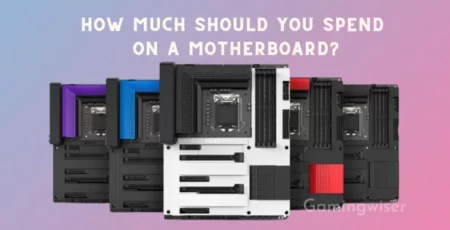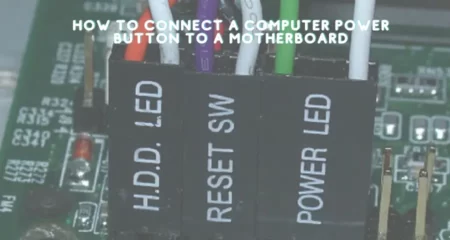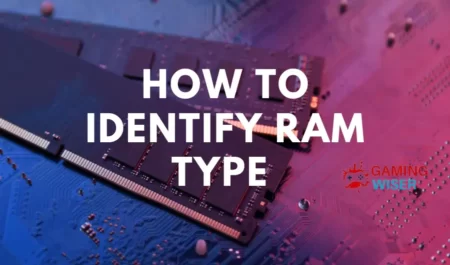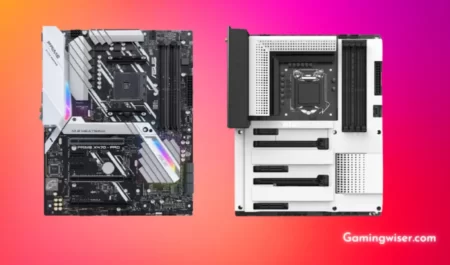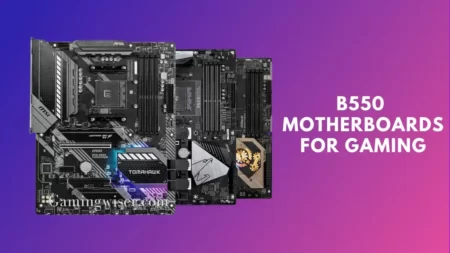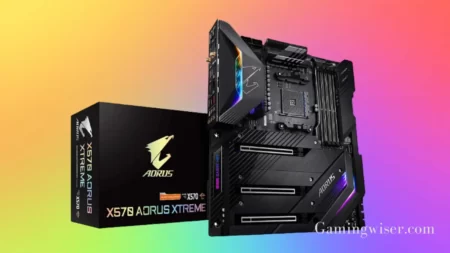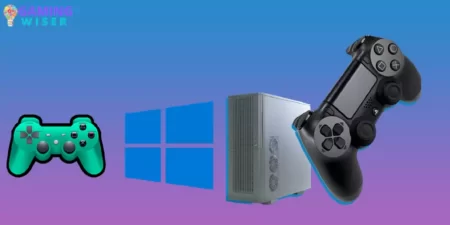VGA lights on the motherboard are a common problem. Although most motherboards are equipped with a VGA light, it can be problematic when it’s not working.
This blog post will provide you with tips on how to fix VGA lights on motherboard.
⏰Short on Time? Here’s a quick and easy guide on how to fix VGA lights on your motherboard:
- Check Your Power Supply: Check your power supply to ensure it is active and functioning correctly. If the power supply has failed, you will see a red LED light on the motherboard s power supply connection.
- Remove all hardware: Remove all hardware from the motherboard. Then, remove the screws on the back of your computer case and disconnect your monitor s cable before removing your computer’s cover. Remove any expansion cards or other hardware that is causing the issue.
- Reseat the Graphics Card: Removing the Graphics Card. Reinserting the Graphics Card.
- Boot Without Graphics Card: Reboot your computer and boot without the graphics card installed.
- Check for Any Damages/Stains in GPU or PCIe Slots: Check for stains, and clean the graphics card if necessary. Make sure there are no obstructions. A graphics card or PCIe slot may sometimes be damaged or bent out of shape.
- Reset and Update BIOS or Replace CMOS: Reset the computer’s BIOS and check for any updates. If none are available, or if the issue persists after updating the BIOS, you should replace CMOS batteries or CMOS board.
What is VGA light on the motherboard?
When you first start up your computer, all the various lights on your motherboard light up for a few seconds. This includes the VGA light. But what does this light represent?
The VGA light on your motherboard indicates that the graphics card is working properly. This is an important component of your computer, as it is responsible for displaying images on your screen. If the VGA light is not lit up, it could mean a problem with your graphics card or that it is not properly seated in the PCI Express slot.
If you are having problems with your computer’s display, one of the first things you should check is the VGA light on your motherboard. If it is lit up, you know that there is nothing wrong with your graphics card and can move on to troubleshooting other potential issues.
What are the causes of VGA lights on the motherboard?
There are a few reasons your computer’s motherboard may have VGA lights. One possibility is that the drivers for your graphics card are not installed correctly. Another possibility is that your computer’s power supply is not providing enough power to the graphics card.
Using a dedicated graphics card, you may also need to connect it to the power supply using an auxiliary power connector. Finally, if your computer is overclocked, you may need to increase the voltage to the graphics card to stabilize it.
Motherboard VGA lights may flash or be on if your computer encounters one of the following issues:
- The display driver is not installed correctly
- The display driver is corrupted
- Not enough power for the GPU
- Damaged GPU pins/slot
- The monitor is turned off
- The power supply is not providing enough power to the graphics card
- The graphics card may be overheating System will not boot
There are several possible causes for this issue. One possibility is that your hard drive has failed, so Windows cannot load.
How to Check and fix VGA lights on motherboard?
1. Check Your Power Supply

The first thing you should check is your power supply. You can do this by using one of the various online power supply calculators or by looking at the specs for your System on the manufacturer’s website.
If you’re unsure how much power your system needs, you can also check the power requirements for each part of your System on various websites.
If you find that your power supply is not powerful enough, you may need to upgrade to a higher-wattage PSU. A low-wattage PSU can cause disruptions in current flow, which can lead to problems with your computer’s components.
You can also check the power supply calculator section on various sites like Newegg and Coolermaster to see if your current PSU is sufficient for your needs.
2. Remove all hardware
If your motherboard has a VGA light, it’s important to understand what it indicates. The VGA light is a diagnostic tool built into your computer.
It’s used to help troubleshoot hardware problems. When the light is on, there’s a problem with your motherboard’s video graphics array (VGA) hardware.
There are a few things you can try to fix the problem. First, remove all external peripherals from your computer, including the monitor, keyboard, mouse, and other devices.
Then, remove all of the PCIe cards from your motherboard, the CPU fan and the hard drives. Finally, disconnect all of the USB devices from your computer.
Once you’ve removed the unnecessary hardware, try turning on your computer again. If the VGA light is still on, there may be a problem with one of the internal components of your computer.
In this case, you’ll need to take your computer to a repair shop to have it diagnosed and repaired.
3. Reseat the Graphics Card
Reseat the Graphics Card: If you have a standalone graphics card, reseat it in its slot on the motherboard. Ensure that the card is properly seated and that all required PCIe slot clips are in place. You may also need to check that your PSU has all of the required cables plugged to power the card.
If you have an integrated GPU (iGPU) on your Intel processor, reseat the processor in its socket on the motherboard. Ensure that the processor is properly seated and that all required socket clips are in place. You may also need to check that your PSU has all of the required cables plugged to power the motherboard and CPU.
If you have a dedicated graphics card, reseat it in its PCI-E slot on the motherboard. Ensure that the card is properly seated and that all required PCIe slot clips are in place. You may also need to check that your PSU has all of the required cables plugged to power the card.
Note: Many systems have more than one VGA light on the motherboard. If you see more than one light lit up, try reseating each of your graphics cards one at a time to see if any of them fix the problem.
You should now have insight like these: The ability to fix VGA lights on a motherboard is a great insight for anyone who owns a PC or is thinking about building one from scratch! This simple guide can help save you time, money, and frustration by showing you how to troubleshoot and fix this common issue.
4. Boot Without Graphics Card
If you’re building a gaming PC and want to save money by not buying a graphics card, you can use an integrated GPU. This is the chip on your Intel processor that handles graphic-intensive tasks. The downside is that you won’t be able to do as much gaming or other graphic-intensive tasks. But if you want a computer for basic tasks, this can work.
To boot, without a graphics card, you’ll need a few things:
An Intel processor with an integrated GPU-The required PSU cables for your motherboard’s power connectors-A PCIe slot clip (if your motherboard has one)
Once you have all of these things, you can begin building your computer. Just be sure to connect the power cables to the right spot on your motherboard and clip the PCIe slot clip into place (if your motherboard has one).
Then, when you boot up your computer, it will use the integrated GPU instead of a dedicated graphics card.
5. Check for Any Damages/Stains in GPU or PCIe Slots
You should check for any damages or stains in your GPU or PCIe slots. If you see any, it’s time to clean your graphic card and motherboard. Express x16 connectors are especially prone to this problem since they have small gold-plated lines that are delicate and can be easily damaged.
To clean your graphics card and PCIe slots, use a can of compressed air and blow away any dust that might have accumulated over time. Be careful not to touch the delicate gold-plated lines with the nozzle of the can, as this can cause dataflow problems.
If you’re still having trouble after cleaning your graphics card and motherboard, then there may be a problem with the connector itself.
Over time, extensive use (or even an unforeseen circumstance) can cause a single line in the connector to become damaged. This will prevent communication between your graphics card and motherboard, causing the “no signal” error.
You can fix this problem by replacing the connector with a new one. You can find replacement connectors at most electronics stores or online retailers.
6. Reset and Update BIOS
The Basic Input/Output System (BIOS) is a chip that controls how the computer starts up and communicates with its hardware devices. If you’ve been having issues with your motherboard, one of the first things you should do is reset and update the BIOS.
There are two ways to reset the BIOS: from the BIOS Setup Utility or by using the “Clear CMOS” jumper on the motherboard. To update the BIOS, you’ll need to go into the BIOS Setup Utility and look for the “Flash BIOS” button. Once you’ve updated the BIOS, you can try troubleshooting other motherboard issues.
The Basic Input/Output System (BIOS) is a chip that controls how the computer starts up and communicates with its hardware devices. If you’ve been having issues with your motherboard, one of the first things you should do is reset and update the BIOS.
7. Check For Any Stains on the PCIe
One of the first things you should do is check for any stains on the PCIe. If you see any, it’s likely that dust has accumulated over time and is causing an electrical short. You can clean this off with a compressed air duster or gently brush it away with a soft cloth.
If the stain is stubborn, you may need to replace the video card. However, the problem is likely with the motherboard itself if you don’t see any stains. In this case, you should contact your hardware vendor for further assistance.
How to fix VGA red light on the motherboard?
If your computer’s motherboard has a red VGA light, there’s an issue with the graphics card. Here are four possible solutions to fix the problem.
- Check that the graphics card is securely inserted into the PCI-E slot. If it’s not, then try reseating the card.
- Check for any loose cables that may be causing a connection issue. Make sure all cables are firmly plugged in.
- Try booting up in Safe Mode to see if the issue persists. If it doesn’t, it’s likely a driver issue, and you’ll need to update your drivers or roll them back to a previous version.
- You may need to replace your graphics card if all else fails.
How to fix VGA white light on the motherboard?
If you have a VGA white light on your motherboard, there are a few things you can try to fix it. First, check to see if the light is on constantly or if it flashes. If it is flashing, there is an error with the signal, and you will need to replace the cable.
If the light is constantly on, there is no signal, and you will need to replace the graphics card. If you have tried both of these things and the light is still on, you will need to replace the motherboard.
Conclusion
If your VGA light is on, it’s best to check your motherboard and see if it needs to be replaced. You can do this yourself if you’re comfortable opening up your computer, or you can take it to a professional. With a little effort, you can have your computer up and running again in no time!
Frequently Asked Questions
What does VGA light mean on the Asus motherboard?
Asus VGA LED is lit up when the graphics card is not receiving power from the PSU, or there is a problem with the graphics card itself. The light can also be caused by a problem with the CPU or integrated graphics.
If you see this light, check your power connections and ensure your graphics card is properly seated in the PCIe slot. You can also try unplugging and replugging the HDMI or DisplayPort cable to see if that resolves the issue.
What Does the Green Light Mean on the Motherboard?
Most motherboards have a light that indicates whether the board is receiving power. If this light is green, the board is powered and functioning properly. If the light is not green, it could mean a problem with the power supply or the motherboard itself.
If you see a green light on your motherboard, the board is receiving power and functioning properly. However, if the light is not green, it could indicate a problem with the power supply or the motherboard itself. Either way, you should check with your manufacturer or a qualified technician to diagnose and resolve the issue.
What Does the Orange Light Mean on the Motherboard?
The orange light on the motherboard is usually an indicator that something is wrong with the CPU. If you see this light, it’s important to check your CPU temperature and make sure it’s not overheating. If the temperature is normal, you may need to replace your CPU.
What does VGA Debug light mean?
The VGA Debug light is a LED on the motherboard that indicates if there’s an issue with the graphics card. If the light is on, the graphics card is not working properly. There are a few things that you can do to troubleshoot the issue:
1. Try reseating the graphics card: This means taking it out of the slot and putting it back in. Make sure that it’s firmly inserted and that all connections are secure.
2. Check your BIOS settings: The BIOS is responsible for booting up your computer and has a setting for which graphics card to use. Make sure that it’s set to use the right graphics card.
3. Update your drivers: The drivers are what tell your computer how to use the hardware, so make sure that they’re up-to-date.
Can a Graphics Card Destroy a Motherboard?
Graphics cards are powered by the PCIe bus, which gives them enough power to function properly. However, if a graphics card is overclocked or stressed too much, it can cause an electrical short that could damage the motherboard.
While a graphics card can damage a motherboard, it is unlikely. Most modern motherboards have built-in safeguards to protect them from potential damage. However, if you are using an older or cheaper motherboard, there is a greater chance that your graphics card could cause some damage.
What Happens If a Graphics Card Dies?
If a graphics card dies, the computer will not be able to display anything on the screen. The computer will still be running, but the user will not be able to see anything.

![[Solved] How To Fix VGA Lights on Motherboard](https://gamingwiser.com/wp-content/uploads/2022/08/How-To-Fix-VGA-Lights-on-Motherboard-915x516.webp)
![Why Motherboard Is Important? [Complete Details]](https://gamingwiser.com/wp-content/uploads/2021/11/Why-Motherboard-Is-Important-450x235.webp)
